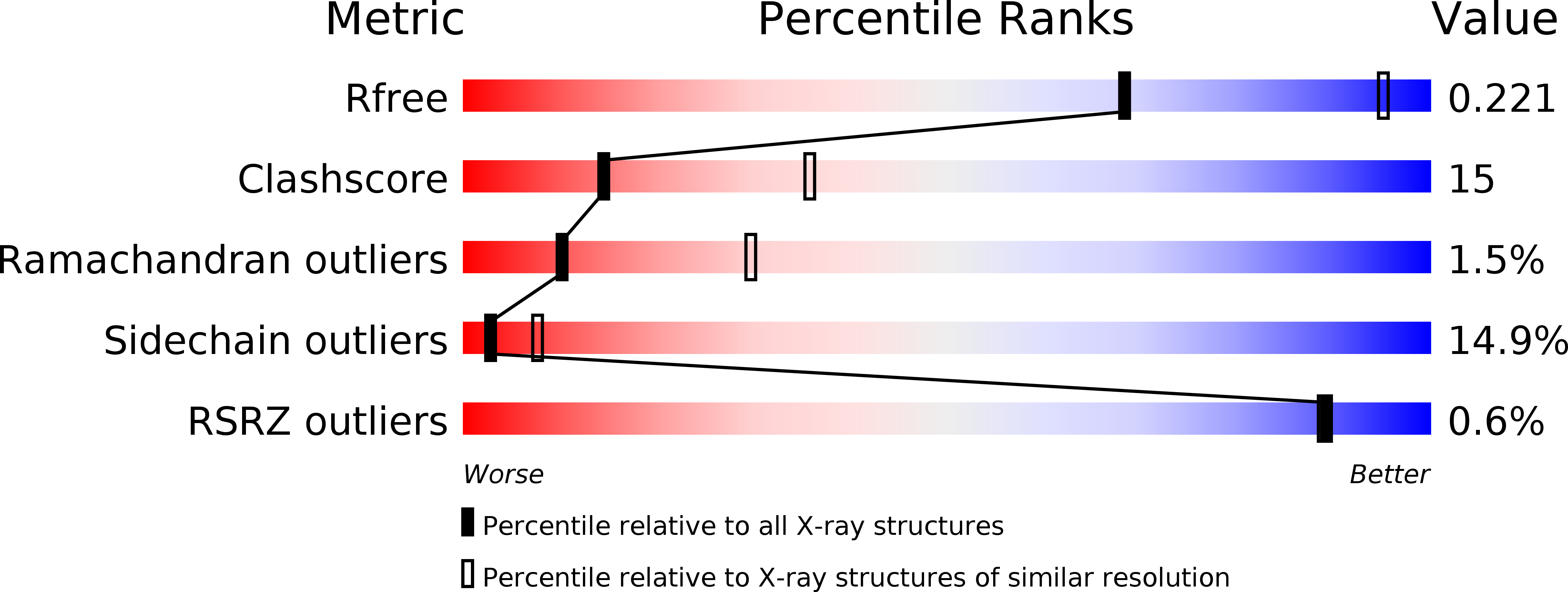Crystal structure of a novel FAD-, FMN-, and ATP-containing L-proline dehydrogenase complex from Pyrococcus horikoshii
Tsuge, H., Kawakami, R., Sakuraba, H., Ago, H., Miyano, M., Aki, K., Katunuma, N., Ohshima, T.(2005) J Biol Chem 280: 31045-31049
- PubMed: 16027125
- DOI: https://doi.org/10.1074/jbc.C500234200
- Primary Citation of Related Structures:
1Y56 - PubMed Abstract:
Two novel types of dye-linked L-proline dehydrogenase complex (PDH1 and PDH2) were found in a hyperthermophilic archaeon, Pyrococcus horikoshii OT3. Here we report the first crystal structure of PDH1, which is a heterooctameric complex (alphabeta)4 containing three different cofactors: FAD, FMN, and ATP. The structure was determined by x-ray crystallography to a resolution of 2.86 angstroms. The structure of the beta subunit, which is an L-proline dehydrogenase catalytic component containing FAD as a cofactor, was similar to that of monomeric sarcosine oxidase. On the other hand, the alpha subunit possessed a unique structure composed of a classical dinucleotide fold domain with ATP, a central domain, an N-terminal domain, and a Cys-clustered domain. Serving as a third cofactor, FMN was located at the interface between the alpha and beta subunits in a novel configuration. The observed structure suggests that FAD and FMN are incorporated into an electron transfer system, with electrons passing from the former to the latter. The function of ATP is unknown, but it may play a regulatory role. Although the structure of the alpha subunit differs from that of the beta subunit, except for the presence of an analogous dinucleotide domain with a different cofactor, the structural characteristics of PDH1 suggest that each represents a divergent enzyme that arose from a common ancestral flavoenzyme and that they eventually formed a complex to gain a new function. The structural characteristics described here reveal the PDH1 complex to be a unique diflavin dehydrogenase containing a novel electron transfer system.
Organizational Affiliation:
Institute for Health Sciences, Tokushima Bunri University, 180 Nishihama-bouji, Yamashiro-cho, Tokushima 770-8514, Japan. tsuge@tokushima.bunri-u.ac.jp






















